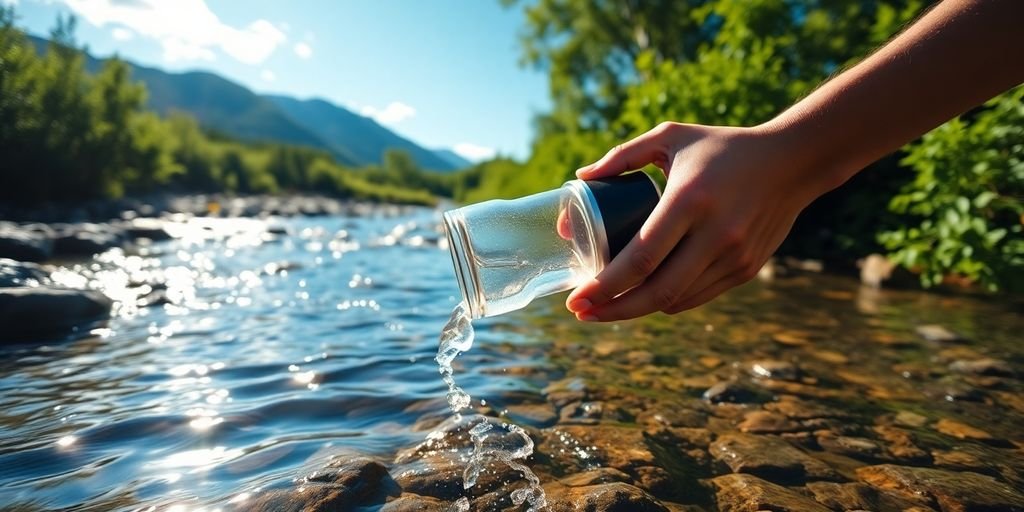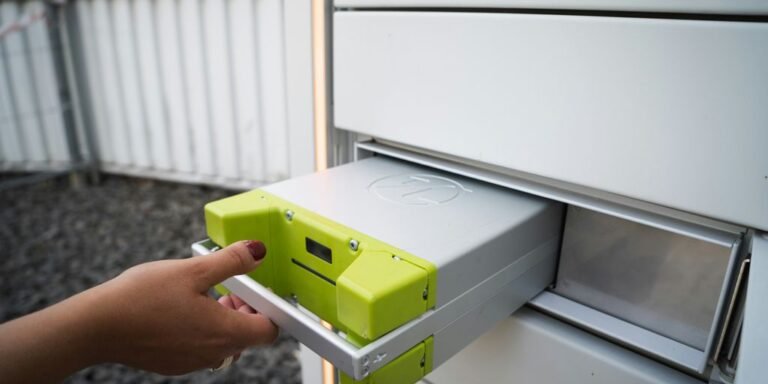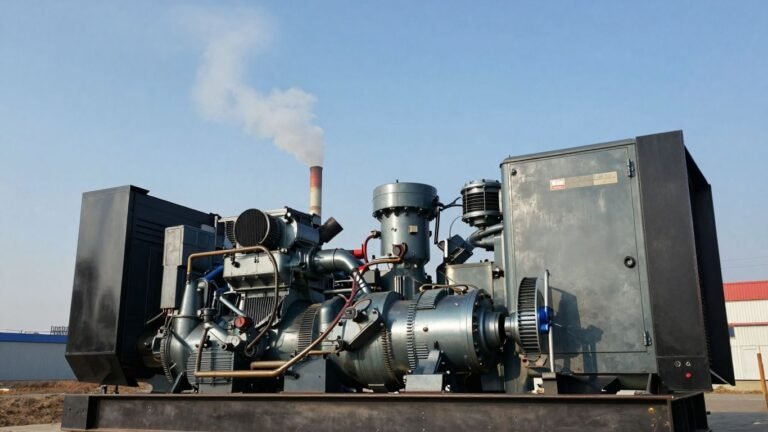The Best Portable Off Grid Water Purifiers for Wilderness Adventures
When you’re out in the wilderness, having safe drinking water is super important. You can’t just drink from any stream or lake; there are all sorts of tiny things in there that can make you really sick. That’s why portable off grid water purifiers are a must-have for any outdoor adventure. They help you turn questionable water into something you can actually drink without worrying. We’re going to look at some of the best options out there to keep you hydrated and healthy on your next trip.
Key Takeaways
- Always research the specific contaminants your chosen purifier removes.
- Consider the weight and size of the purifier for your pack.
- Think about how fast you need to purify water.
- Check if the purifier requires batteries or other consumables.
- Always have a backup method for water purification, just in case.
1. Katadyn Pocket Water Microfilter

The Katadyn Pocket Water Microfilter is a classic choice for those serious about clean water in the wilderness. It’s built to last, capable of filtering up to 13,000 gallons (49,210 liters) of water, making it a reliable companion for extended trips. This filter uses ceramic depth filtration with 0.2 micron pores to remove bacteria, protozoa, cysts, algae, and spores. It’s a bit of an investment, but its durability and effectiveness make it a worthwhile one. When setting up off-grid water systems, having a reliable filter like this is key.
- Filter Technology: Pump filter, ceramic depth filtration (0.2 microns)
- Filters: Bacteria, protozoa, cysts, algae, spores
- Filter Life: 13,000 gallons (49,210 liters)
The Katadyn Pocket Filter is made from aluminum, stainless steel, silicone, and ceramic. It weighs around 19 ounces, so it’s not the lightest option, but its robust construction ensures it can handle tough conditions. It’s a dependable choice for anyone needing a long-lasting water purification solution.
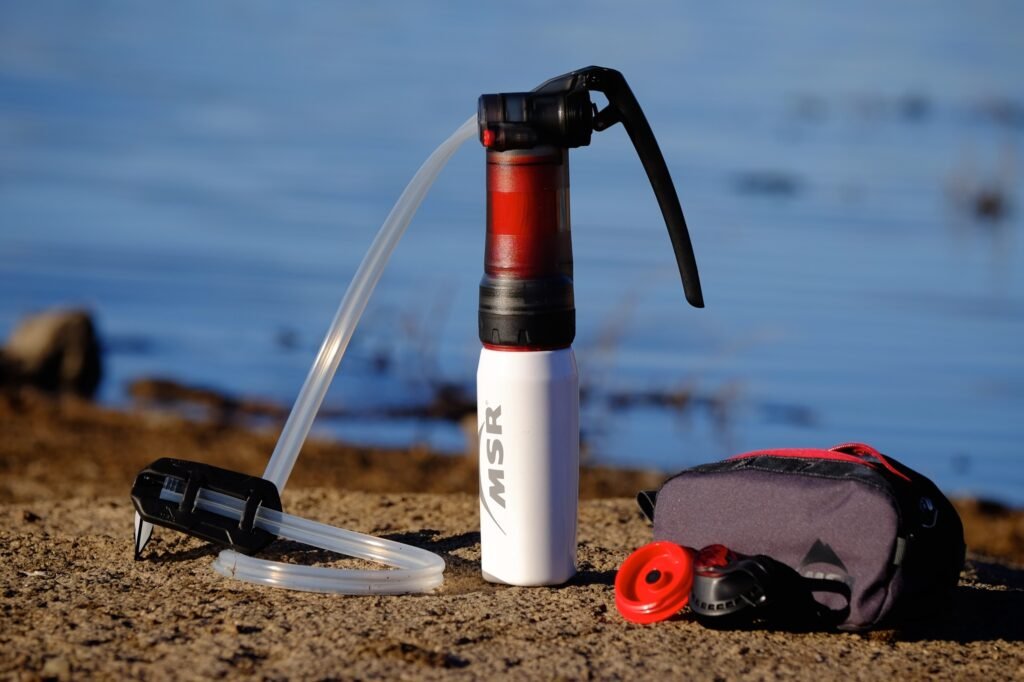
2. MSR Guardian Purifier
The MSR Guardian Purifier is a beast. Seriously, this thing is built for serious adventures where water quality is questionable at best. It’s designed to remove viruses, bacteria, protozoa, and particulate matter, making it a true purifier, not just a filter. It’s definitely an investment, but if you’re heading somewhere remote and need reliable water purification, it’s worth considering.
Here’s a quick rundown:
- Removes viruses (a big deal, most filters don’t)
- High flow rate (2.5 liters per minute)
- Self-cleaning (backflushes with each stroke)
- Durable construction
The MSR Guardian is overkill for casual hikes, but if you’re traveling internationally or exploring areas with potentially contaminated water sources, it provides peace of mind. It’s a robust and reliable option for ensuring safe drinking water in challenging environments. It’s a great handheld filter for thorough cleaning.
While it’s a bit on the heavier side, and the price tag might make your eyes water, for serious expeditions, the MSR Guardian Purifier is a top contender.
3. SteriPEN Adventurer
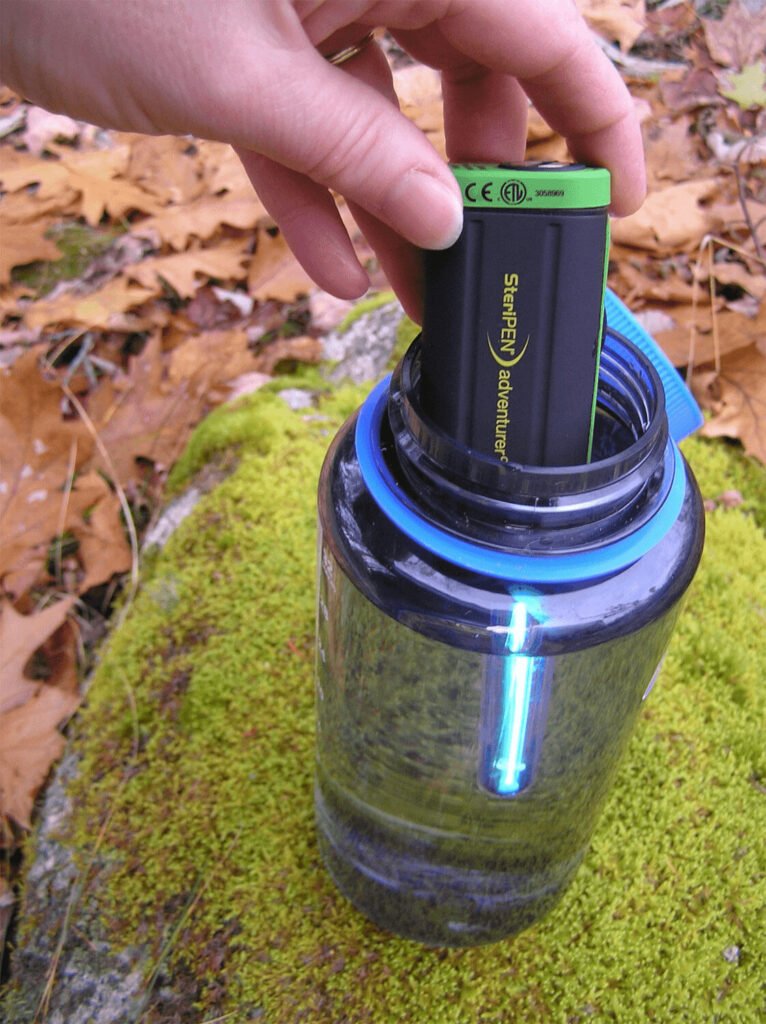
The SteriPEN Adventurer is a popular choice because it doesn’t require pumping or filtering. It uses UV light to neutralize bacteria and viruses in a short amount of time, usually between 60 and 90 seconds. A mountain guide recommended it after experiencing issues with chemical treatments. He found the UV filter simple to use and durable enough for week-long mountaineering trips.
Using the Adventurer is straightforward. You just need a wide-mouth bottle, activate the UV light, and stir for 90 seconds for 1 liter of water. It’s important to note that this method doesn’t remove particulates, so filtering through a bandana first is a good idea. At 3.6 ounces, it’s a bit heavier than some other options, but the speed can be a major advantage if the water is relatively clear.
The SteriPEN Adventurer is great for shorter trips where quick filtering is important. It’s especially useful if you’ve had stomach issues and need to purify water rapidly.
Here are some things to consider:
- It runs on CR123 batteries, which aren’t rechargeable (unless you upgrade).
- It doesn’t remove particulates.
- Rechargeable versions are available, like the SteriPEN Ultra, but they are more expensive.

4. Platypus QuickDraw
The Platypus QuickDraw has become a favorite for many backpackers. It’s known for its balance of speed and ease of use. It’s a hollow-fiber membrane filter, similar to the Sawyer Squeeze, but with some key differences. The QuickDraw uses a 0.2-micron pore size, while the Sawyer has a 0.1-micron pore size.
While the difference in pore size doesn’t really affect protection from particulates, bacteria, and protozoa, the QuickDraw often has a better flow rate. Some users have found that Sawyer Squeeze filters can slow down significantly over time, but the QuickDraw tends to maintain its flow rate for longer. If you’re looking for sustainable water management, this is a great option.
The 1L system comes with a durable reservoir that connects to the filter with quarter-turn threads, which many find easier to use than screwing the Sawyer onto smaller spouts. The filter itself also has these threads internally, so you can use it with a regular water bottle if you want. There are also 2L and 3L versions available now, giving you more options for capacity. Just be aware that some users have reported issues with the handle on the 3L reservoir detaching, so it might be best to wait for the brand to address that before buying that size.
The QuickDraw filter also has a design that helps protect the hollow-fiber membrane from damage if it freezes or gets dropped. This is a nice feature that can give you some peace of mind when you’re out on the trail.
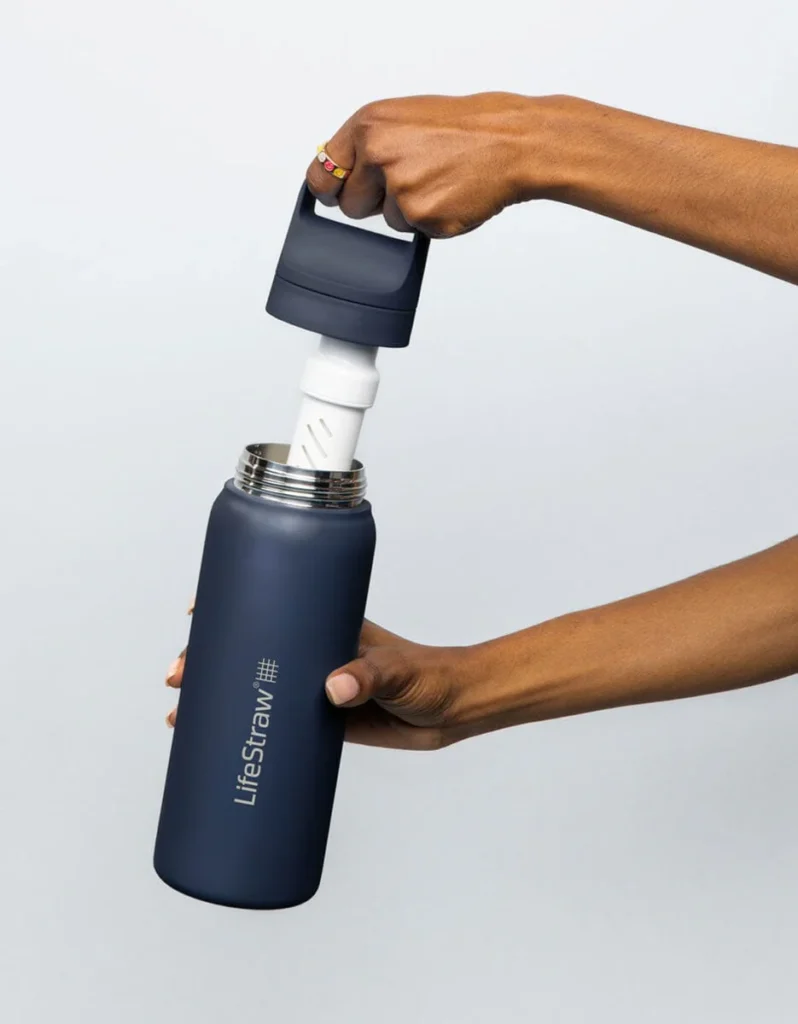
5. LifeStraw Go Filter Bottle
The LifeStraw Go Filter Bottle is a pretty cool option if you want something more convenient than just a straw. It’s basically the classic LifeStraw tech built into a BPA-free bottle, which is now made from 50% recycled plastic. I’ve used it on a few hikes, and it’s pretty handy. It’s definitely one of the best budget filter bottles out there.
It’s super easy to use, which is a big plus. You just fill it up and drink. The flow is good, not like you’re trying to suck a milkshake through a tiny straw. The water tastes pretty clean too, thanks to the activated carbon filter that reduces chlorine and other stuff. It’s a solid choice for daily use or short trips where you don’t want to lug around a ton of water.
One minor annoyance is that the straw doesn’t reach the very bottom of the bottle. You always end up with a little bit of water you can’t get to, which can be a bummer when you’re really thirsty.
Here are some things I like about it:
- Easy to carry and store water.
- Simple to use – just fill and drink.
- Good flow rate once you get it going.
- Activated carbon filter improves taste.

6. Grayl GeoPress
The Grayl GeoPress is a fantastic option if you want something that’s more than just a basic filter. I’ve used it on several trips, and it’s become my go-to for international travel where water quality is questionable. It’s a bit pricier than some other options, but the peace of mind it offers is worth it, in my opinion.
The Grayl GeoPress uses a unique press-to-filter design that’s incredibly fast and effective. You simply fill the outer cup with water, then press the inner cup down to force the water through the filter. It’s quick, easy, and doesn’t require any sucking or squeezing like some other filters. Plus, it filters out viruses, bacteria, protozoa, and even heavy metals and chemicals, which is a huge plus when you’re not sure what’s lurking in your water source. The Grayl GeoPress is a great choice for those who want a reliable and versatile water purifier.
One thing I really appreciate about the GeoPress is its durability. It feels solid and well-built, and I’m not worried about it breaking or leaking in my pack. It’s also easy to clean, which is important when you’re using it in the backcountry. The replacement cartridges can be a bit expensive, but they last for a decent amount of time, and the convenience and effectiveness of the GeoPress make it a worthwhile investment.
Here’s a quick rundown of why I like it:
- Fast filtration: Clean water in seconds.
- Comprehensive protection: Removes viruses, bacteria, protozoa, chemicals, and heavy metals.
- Durable design: Built to withstand rugged conditions.
- Easy to use: Simple press-to-filter operation.
While it’s a bit bulkier than some other options like the SteriPEN, the GeoPress is still relatively compact and easy to pack. If you’re looking for a reliable and versatile water purifier that can handle just about anything, the Grayl GeoPress is definitely worth considering.
7. Katadyn Micropur M1
Okay, so the Katadyn Micropur M1 tablets are pretty straightforward. Basically, you toss one of these little guys into your water bottle or container, wait about half an hour, and boom – purified water. It’s not the fastest method, but it’s definitely one of the easiest, especially if you’re not dealing with super murky water. I mean, nobody wants to drink water with floaties, right?
These tablets are great as a backup. They’re super light and don’t take up much space in your pack. Just remember, they’re best for clear water since they don’t actually filter out any sediment or debris. Think of them as a final defense against the nasties you can’t see.
I’ve used these on a few trips where I knew the water source was relatively clean, and they worked like a charm. Plus, I think they leave less of a weird taste than some other chemical treatments. Speaking of taste, it’s still a good idea to let the water sit for a bit after the treatment to let any residual chlorine dissipate. Nobody wants to feel like they’re drinking from a swimming pool. For water purification, these are a solid choice.
Wrapping Things Up
So, there you have it. Picking the right portable water purifier for your wilderness trips is a big deal. It’s not just about having clean water; it’s about staying safe and healthy out there. Whether you go with a simple filter, a fancy UV purifier, or something in between, just make sure it fits what you need. Think about how many people you’re with, how long you’ll be gone, and what kind of water sources you’ll find. Having a good purifier means you can enjoy your adventure without worrying about getting sick. So, grab your gear, pick your purifier, and get out there!
Frequently Asked Questions
Is boiling water better than using a filter?
Boiling water is a super reliable way to make it safe to drink. It kills almost all germs. Filters, though, need to be used just right. If not, tiny unwanted things can still get into your water.
Where can I find water to filter in the wild?
When you’re out in nature, you can find water in streams, rivers, lakes, or even from melting snow. Always try to find the clearest water you can.
How often should I clean my water filter?
You should clean your water filter often, especially after each trip. Follow the directions that came with your filter. This helps it work well for a long time.
Do all filters remove viruses?
Most filters are good at removing tiny living things like bacteria and protozoa. But some, like UV purifiers or chemical treatments, are better for getting rid of viruses, which are even smaller.
Should I carry a backup water purification method?
Yes, it’s a good idea to have a backup plan. This could be chemical tablets, a small UV light, or even just the knowledge of how to boil water if your main filter breaks or gets clogged.
How do I pick the right water filter for my trip?
The best filter for you depends on what you’re doing. If you’re hiking alone, a small, light filter is great. For a group, you might want a bigger filter that can clean more water quickly. Think about how many people you’re with and how much water you’ll need.

